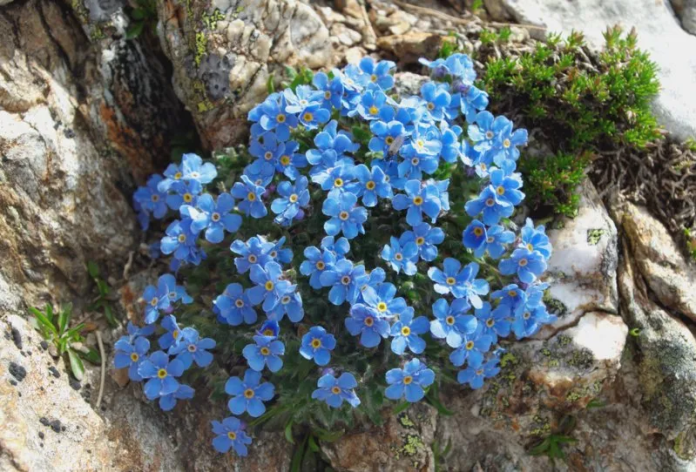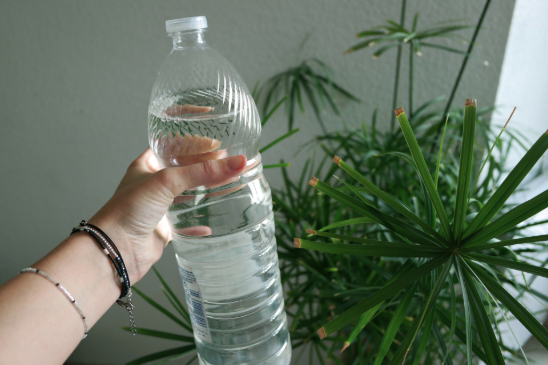Forget-me-nots are one of the most common and popular flowers when you’re considering adding flowers to your garden. They are beautiful, they smell great, and they are relatively easy to care for.
If you’re interested in adding these gorgeous flowers to your yard, you’ll notice that there’s more than just one kind. There are dozens of forget-me-nots, so it’s crucial to narrow down your choices to the best varieties.
Our top 10 forget-me-nots varieties
- Woody Forget-me-nots
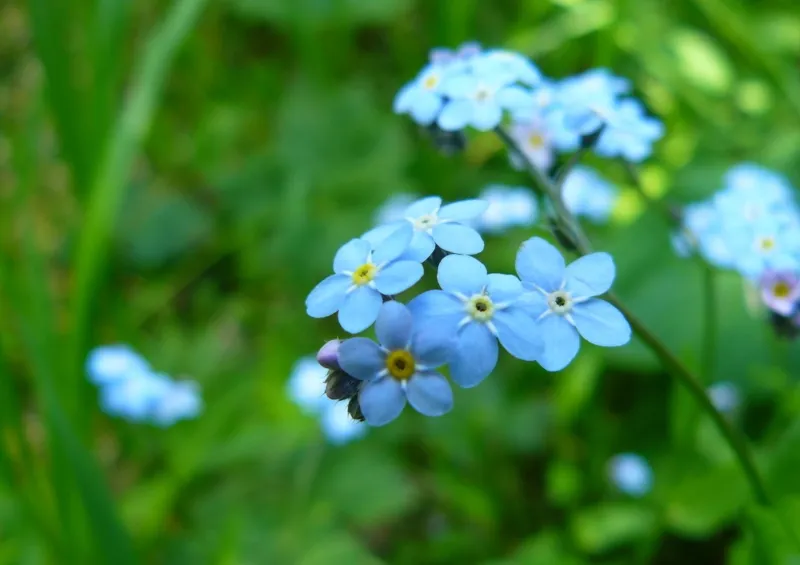
Woody forget-me-nots are a beautiful flower. They tend to bloom at any time in the spring until the middle of summer. They come in bright blue, pink or white colors and have white or yellow eyes.
It is easy to grow and will thrive in moist and fertile soil. Woody forget-me-nots are a popular choice because they are easy to maintain after planting. These flowers grow well in full sun or partial shade. This versatile flower is perfect for growing alone or as a garden or border addition.
- Victorian Rose Forget-me-not
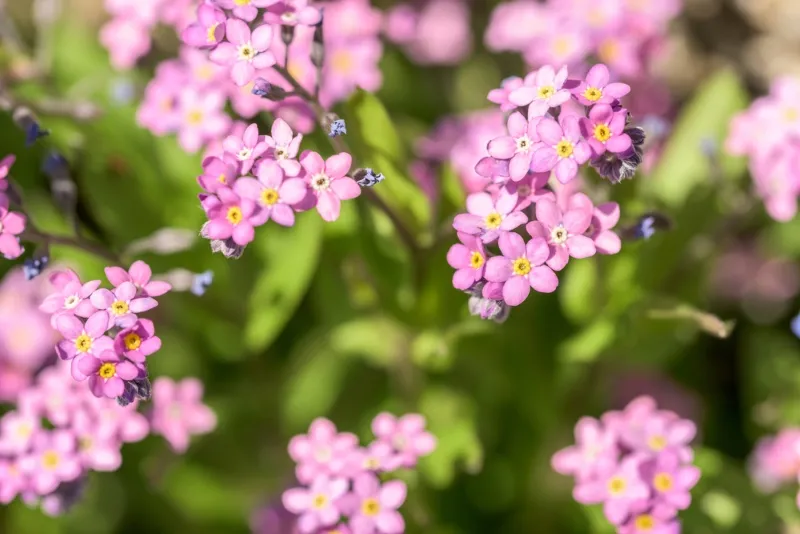
All forget-me-nots are beautiful, but the Victorian Rose Forget-me-Not may be one of the most beautiful. These flowers bloom in a lovely pink or dusty rose color. The eyes of these flowers are yellow or almost gold.
When you plant these flowers in your garden, they will not bloom the first year. These flowers tend to grow stems within the first year and then bloom the following year. They are great for edging and need partial shade.
- Field forget-me-nots
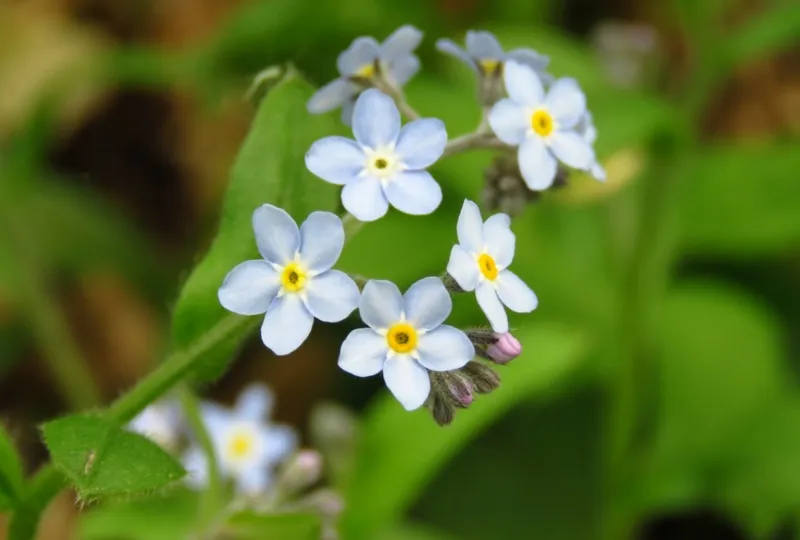
Like other forget-me-nots, field forget-me-nots are native to Asia, but have been introduced to North America. These flowers are found mainly in northern and eastern North America. When this plant blooms, the five petals are traditionally light blue with a yellow eye.
One of the biggest attractions of field forget-me-nots is the flexibility of this plant. They will wait until conditions are right to bloom and live until the time is right. They are very picky about the type of soil they prefer and do best in vegetable gardens or near rocky surfaces with spots.
- Forget-Me-Nots (Water Forget-Me-Nots)
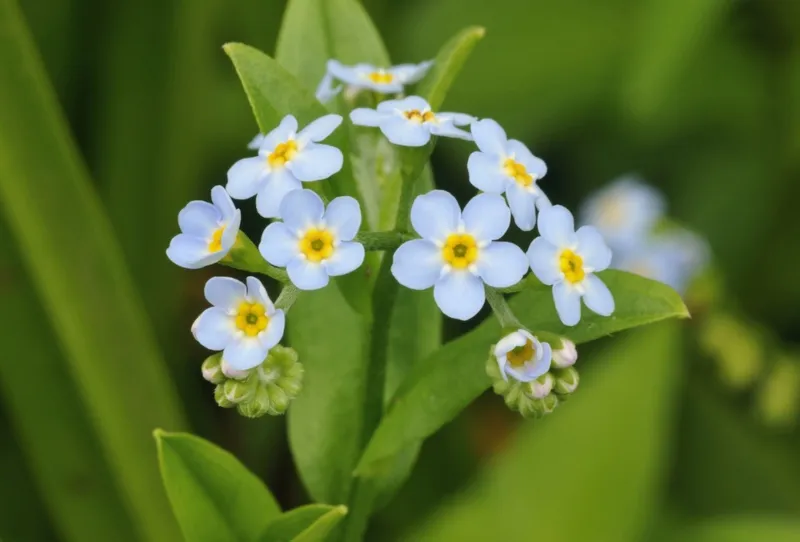
You can find forget-me-nots growing throughout North America, primarily in wetlands and New England. These flowers thrive in water-rich or wet environments, such as lakes and rivers, hence the name. These perennial flowers grow in shades of blue and purple, and they each have five petals.
These flowers prefer to live in moist soil, but they can quickly adapt to traditional garden soil. If you use standard garden soil, you will need to keep it moist enough for it to bloom properly. When you plant them, they need partial to full sun.
- Alpine forget-me-not

You may have heard that Alpine forget-me-nots are scorpion grasses. They are very common in the UK but grow well in basic rock formations, meadows and moist woodlands in the US. They begin flowering in spring and continue through early summer.
When Alpine forget-me-nots bloom, you will be greeted with beautiful, bright blue flowers and yellow eyes. Before you plant these flowers, you want to make sure you have chosen a spot where they can have partial to full sun and in well-drained soil.
- Clumping forget-me-nots
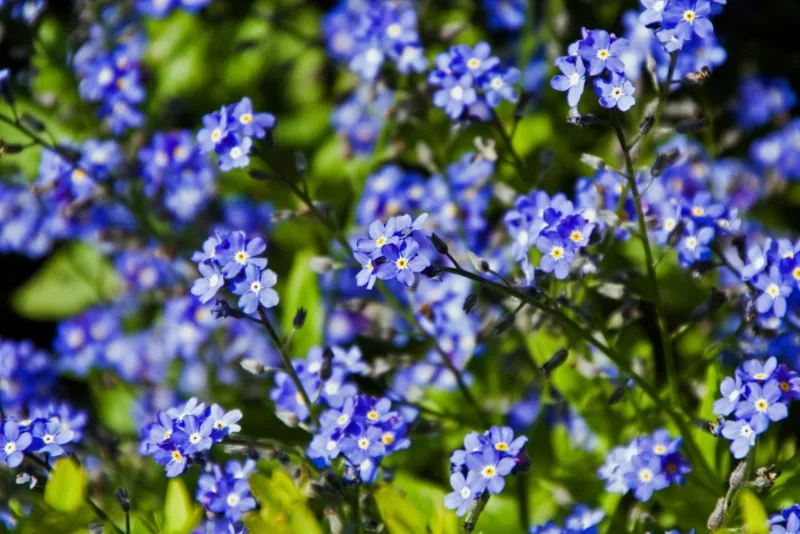
Also known as bay or small-flowered forget-me-nots, bush forget-me-nots are a beautiful flower and somewhat unique as far as these flowers are concerned. Most forget-me-nots are varying shades of blue, but these flowers have a very light blue color that is close to white. You can even find them in red, purple and dark blue.
Clumps of forget-me-nots grow well in moist environments, such as on the banks of rivers, ponds and lakes. When growing these flowers, you need to keep the soil moist all year round, especially in the spring when they bloom.
- Strictly forget-me-nots
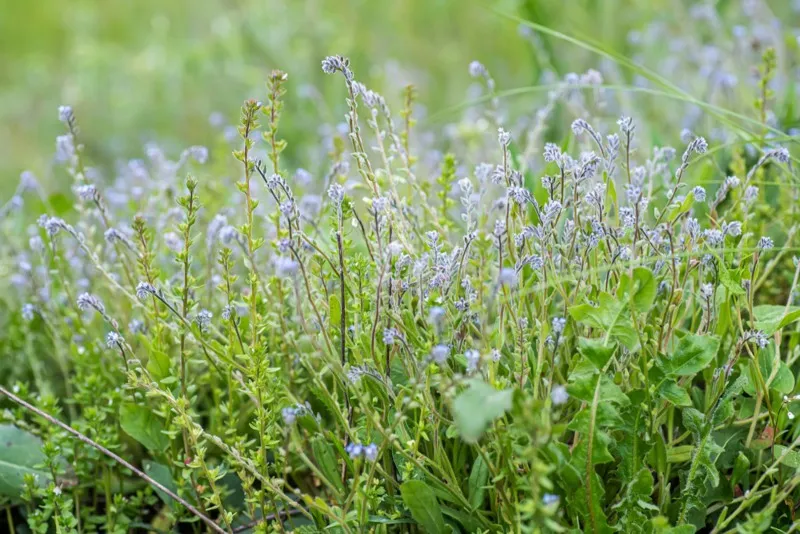
While the vast majority of forget-me-nots are some sort of blue, strict forget-me-nots are often referred to as blue forget-me-nots. They grow in parts of North America and bloom in a light blue color. They are one of the easiest varieties of forget-me-nots to flower in the forget-me-not family.
Strict forget-me-nots prefer sandy soil or undisturbed dry ground. They thrive in full sun, but occasionally some shade.
- Variegated forget-me-nots

Metamorphic forget-me-nots get their name because they change color throughout their flowering period. When they first bloom, they are yellow or cream in color, then turn pink and finally reach blue.
Unlike other forget-me-nots, the petals are curled. Traditionally, you will find these flowers in undisturbed areas, but they can do well in your home garden as well. Like other forget-me-nots, perennials prefer some shade, but can also survive in full sun.
- Myosotis précoce
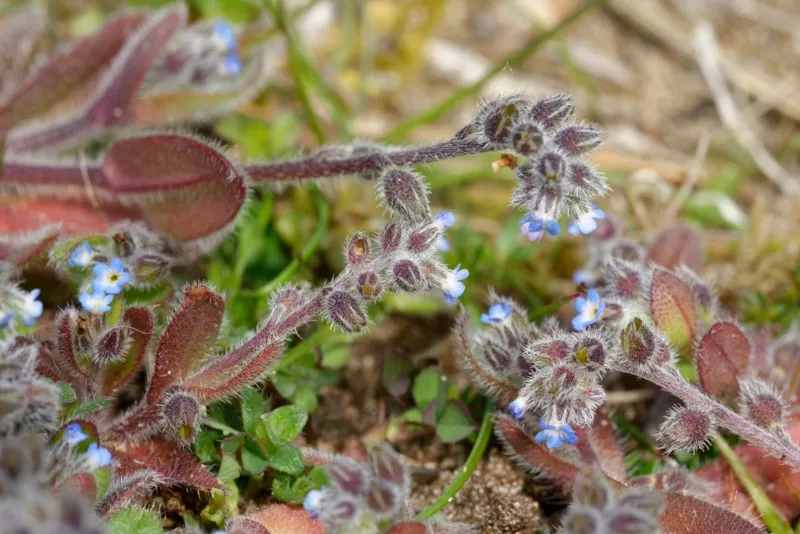
Les premiers myosotis ne sont pas originaires d’Asie comme de nombreuses autres espèces. On pense qu’ils sont venus de l’extrême nord de la Grande-Bretagne. Cela signifie qu’ils ont tendance à se comporter très bien dans des conditions froides.
Elles ne fleurissent que d’avril à juin, mais entre-temps, vous aurez une mer de fleurs bleues dans votre jardin. Ces fleurs se plaisent dans les climats secs et les zones ouvertes. Bien qu’elles poussent bien dans les climats secs, le sol doit être maintenu humide. Elles préfèrent un peu d’ombre, mais s’accommodent bien de la lumière directe du soleil.
- myosotis de Laponie
Le myosotis de Laponie est originaire du nord de la Finlande. En tant que tels, ils préfèrent les conditions froides. Elles se développent dans les forêts et dans les zones où se trouvent de petites sources et où le sol est humide. Lorsque vous plantez ces plantes dans votre jardin, vous devez garder le sol bien humidifié.
Alors que les autres myosotis fleurissent au printemps, le myosotis de Laponie fleurira en juillet et août. Elles ont besoin d’une ombre partielle, mais peuvent aussi être en plein soleil. S’ils sont exposés au plein soleil, vous devrez vous assurer qu’ils ne sont pas exposés au soleil en permanence.
Dernières réflexions
Que vous viviez dans un climat humide ou sec, il y a toujours un myosotis qui fera un excellent choix pour votre jardin ou votre cour. La plupart d’entre elles fleurissent au printemps, vous pouvez donc vous attendre à de belles floraisons qui attireront les pollinisateurs dans votre jardin.

